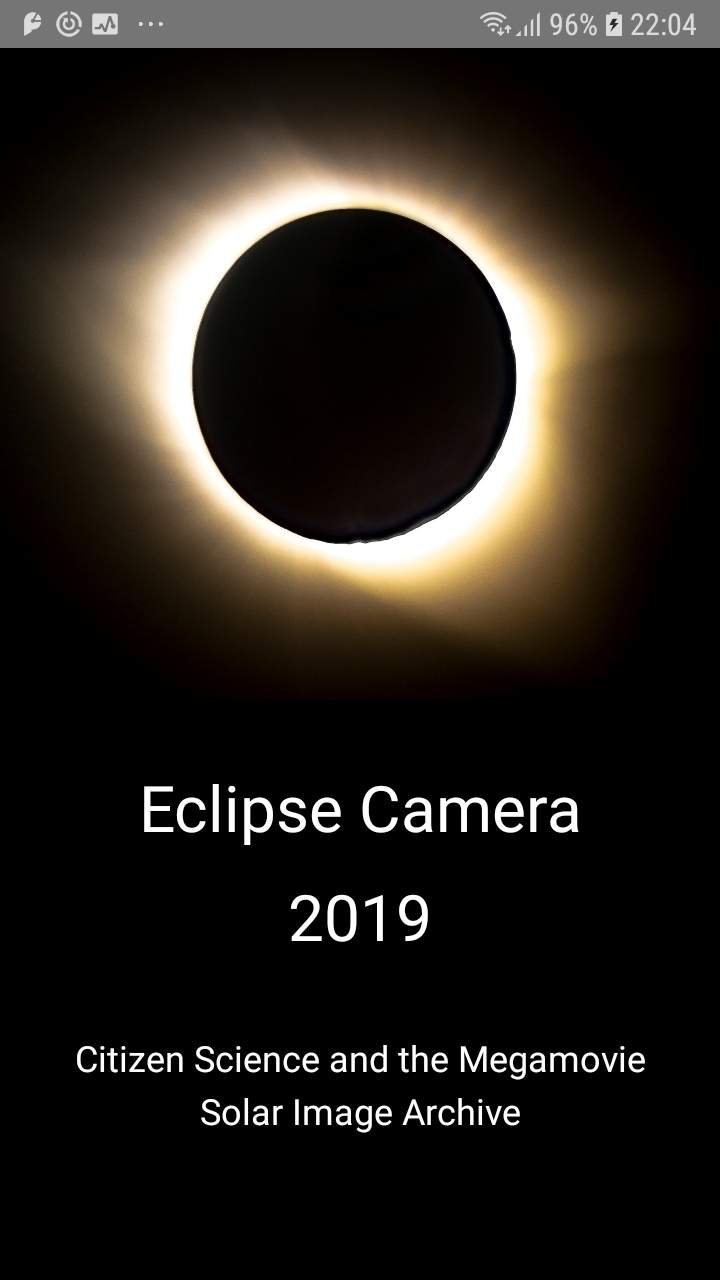On July 2, 2019, a Total Solar Eclipse will happen through Argentina and Chile, if you're around, download the Eclipse Camera 2019 app created by researchers to generate a giant image database of eclipse observations.
https://m.youtube.com/watch?feature=youtu.be&v=iD6T1GmmFBM
The Eclipse Camera 2019 application, created by the University of California's Laboratory of Space Sciences in Berkeley along with Ideum, takes you to an international citizen science project and helps you see and photograph this incredible event.
When you use the application and provide its permission, the images and the time and location data with which they are associated can be sent to the entire scientific community by creating a giant database of eclipse observations.
But the Eclipse Camera 2019 application does much more than that.
Taking good photos of astronomical events requires a steady hand and precise control of exposure time and sensitivity. The Eclipse Camera 2019 application helps you take pictures and videos of your eclipse with precision and provides information on how to mount the phone on a tripod, add an external lens or use a digital SLR camera.
The application also provides information about the best route from your location to the eclipse trajectory, where you can see the whole, a countdown clock for the big event, and an integrated practice mode to get used to setting up your phone or camera for get great photos.
FEATURES:
Map of the trajectory of the whole that shows its distance and the shortest path to see the whole eclipse.
Countdown timer linked to your location.
Instructions for setting up your phone with a tripod and an external lens.
Orientation function to simplify camera orientation.
Practice how to familiarize yourself with the application before eclipse.
Self-timer and exposure control to minimize movement and camera shake.
The embedded link to the University of California's Space Science Laboratory in Berkeley sends its images and data to an international citizen science project that investigates the mysteries of the Sun revealed by solar eclipses.
How to observe the eclipse?
It is crucial for those who go live to use proper lenses. Experts point out that traditional sunglasses, x-ray film, negative old film, digital cameras and dark glasses impair vision if used to observe the phenomenon.
Through the internet, it will be possible to follow the transmissions through the ESO sites, European Southern Observatory, at 4:15 pm, or the Exploratorium museum, which will be fed with images of the phenomenon. The TimeAndDate.com YouTube channel will also broadcast the fact from 4:00 p.m. onwards.
A solar eclipse occurs, on average, once every 18 months, but always in different regions. Scientists believe that a complete solar eclipse can only be observed in Brazil in 2045.

Posted using Partiko Android
Congratulations @fabi1315! You have completed the following achievement on the Steem blockchain and have been rewarded with new badge(s) :
You can view your badges on your Steem Board and compare to others on the Steem Ranking
If you no longer want to receive notifications, reply to this comment with the word
STOPThank you so much for being an awesome Partiko user! You have received a 8.53% upvote from us for your 1185 Partiko Points! Together, let's change the world!